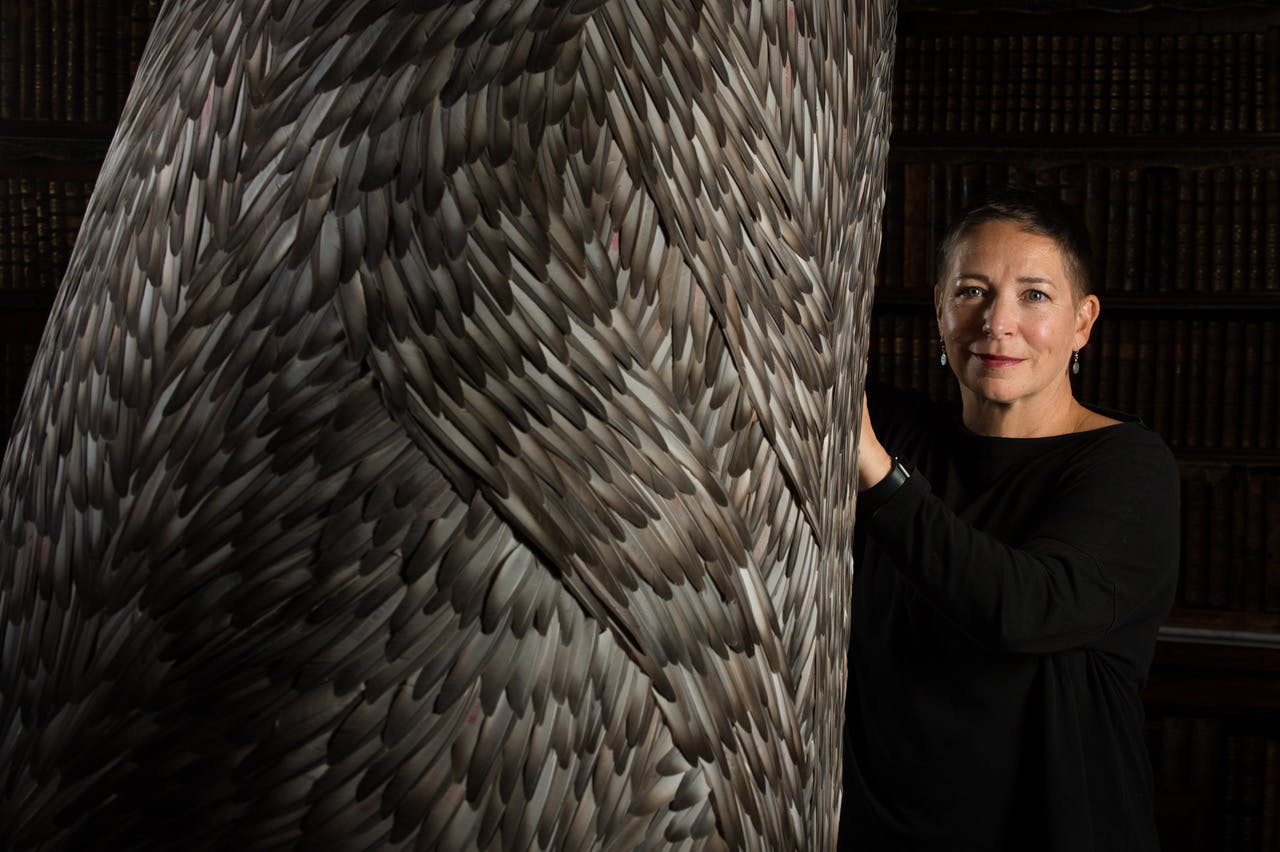

How are you?
I am well, and after a long winter and year, with the arrival of spring, I am feeling hopeful.
Can you introduce yourself?
I am a British, London-based artist who works primarily with feather as my medium. I spent my childhood growing up on the Norfolk Broads and my early memories of its landscape, dominated by wetlands, serpentine waterways and the wildlife that lives along the region's waters, form the foundations of my practice, which is inspired by the cycles, patterns and dualities of nature.
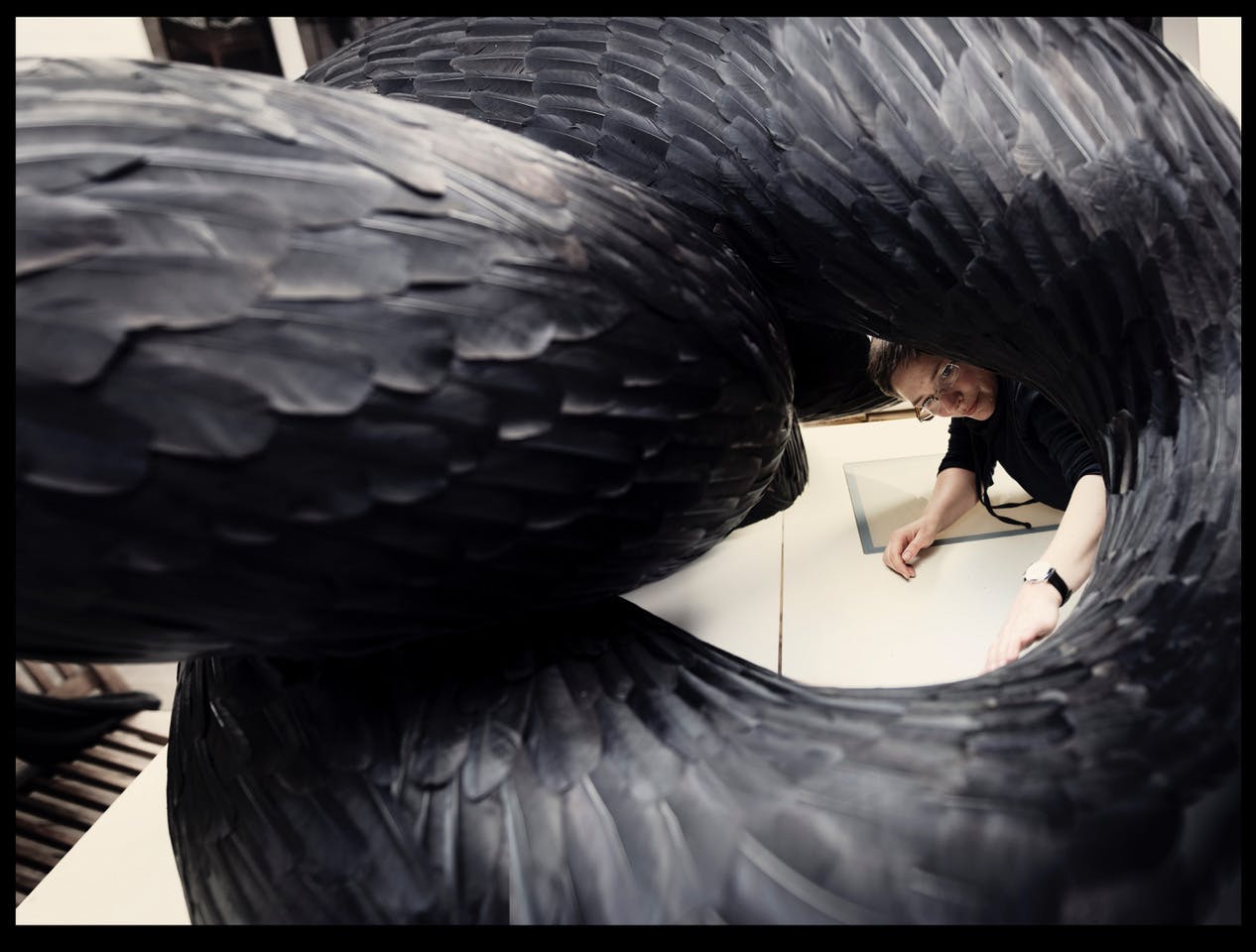
What is your artistic background?
I studied at the Royal College of Art in London and graduated with a MFA in Sculpture in 2004. Prior to that I studied a BA in Fine Art at the University College for the Creative Arts in Farnham, Surrey.
What was your first artistic creation?
My first artwork is attached, it is a drawing of a feather which I drew aged 10.
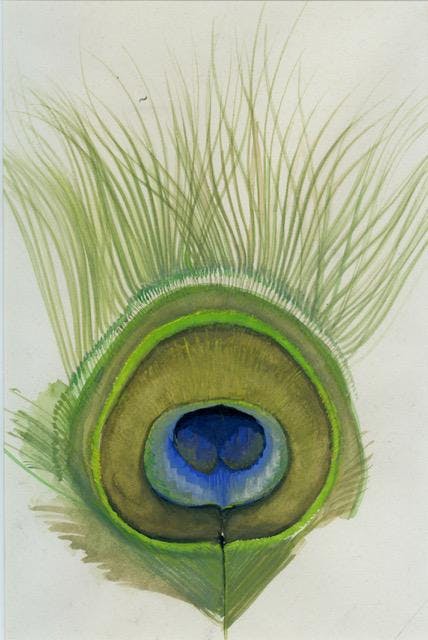
Tell me more about your art. What are your sources of inspiration? And what is your message to the world?
Having grown up in the landscape of the Norfolk Broads, my work is inspired by the cycles, patterns and dualities of nature.
I am especially interested in avian wildlife and in my practice, though I work with many sources of feather, I am particularly fascinated by pigeons, birds that though commonly perceived as vermin, have been venerated by pigeon fanciers throughout the ages.
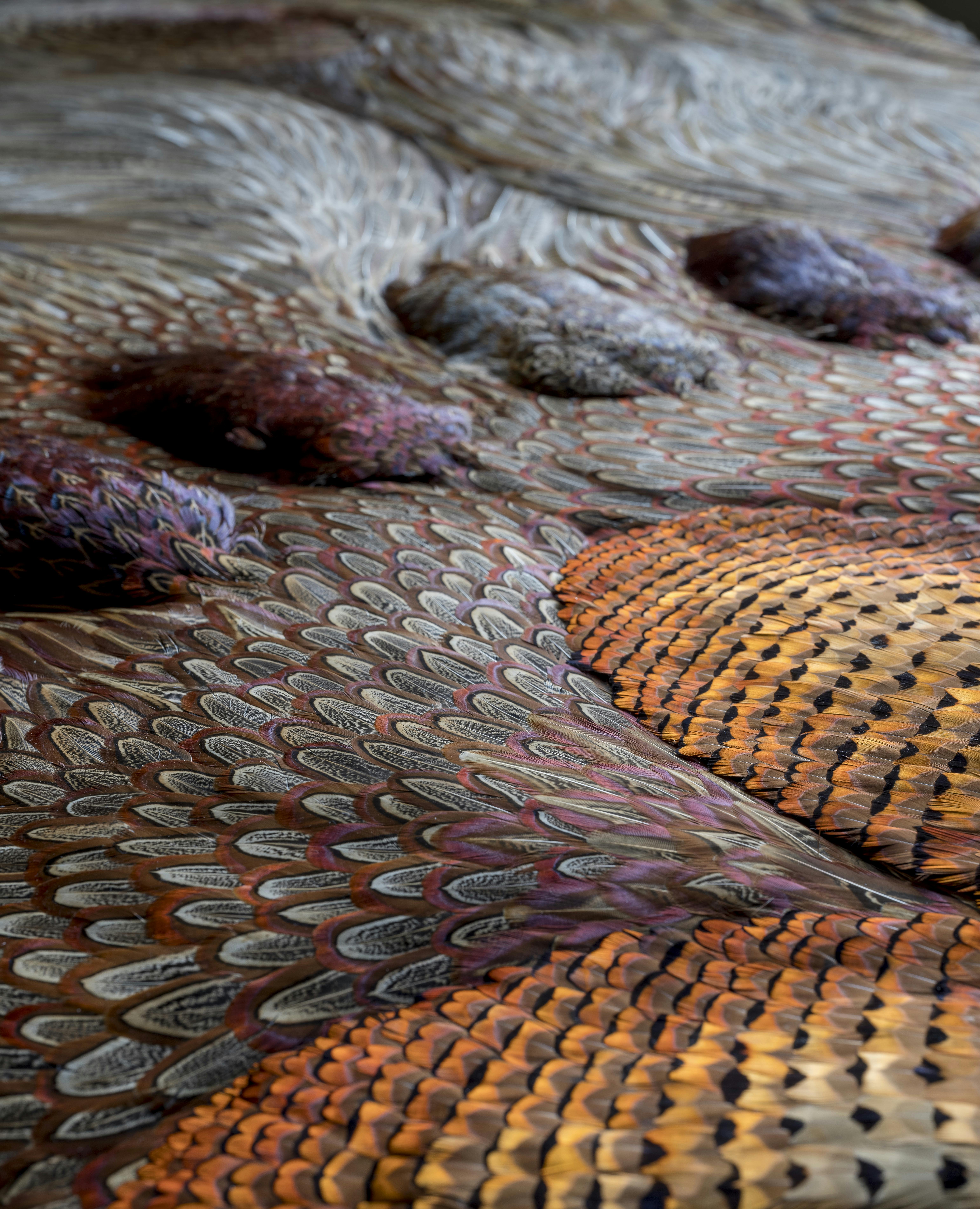
A small but enthusiastic group of keepers to this day use pigeons for racing, due to the birds’ homing instincts and unique ability to return to their exact point of departure after migrating several thousand miles. Such keepers mark the feathers of their racing pigeons with messages and telephone numbers so that if the birds lose their way during a race they may be returned. I like to retain these human markings in my works as a record of the journeys that the birds have made.
In the recent past, pigeons traversed treacherous waters to deliver messages across the globe, most notably to frontline soldiers during Great Britain’s First and Second World War efforts.
"I am interested in drawing attention to these unsung heroes and through my practice, I enjoy taking overlooked and disregarded material to create objects of value and beauty which encourage viewers of my work to take a second look"

Can you describe your working environment / your workshop? and your daily routine?
I usually wake to birdsong around 6am and as an avid wild swimmer, I start my morning with a dip in the river. After a swim, I have breakfast with my partner Carlo, then I walk our dog, Echo, before heading to my studio which is aboard a 20 metre-long Dutch barge from the early Twentieth Century. The studio is surrounded by wildlife : just this morning I saw wrens nesting outside its windows, as well as blue tits, kingfishers, cormorants, ducks and parakeets. It is a wonderful spot from which to create.
I work by daylight, often listening to audio books as I sculpt or draw. Before lockdown began, I would have studio assistants with me on the barge, but this past year I have been working alone. I work until sunset, when I take Echo out for an early evening walk, before returning to the studio until 8 or 9pm. The solitude of the evening makes for the most productive time of my day.
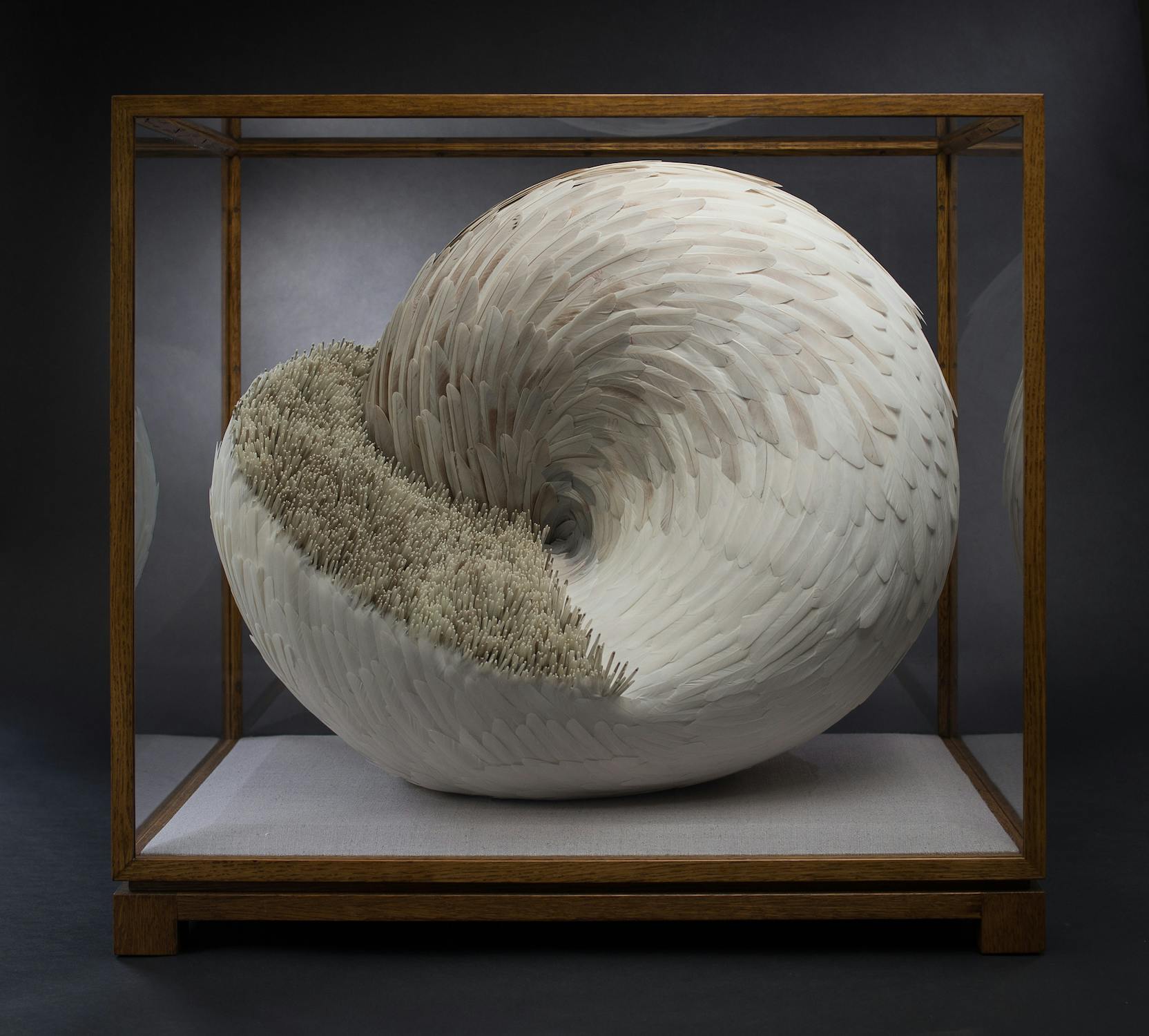
Can you tell me your next exhibition dates? and the places?
A monograph on my work will be published by Anomie at the beginning of April, which you can find here.
I was due to have a solo exhibition at Galerie Les Filles du Calvaire in Paris around this time, but due to the virus, the project has been rescheduled for April next year.
What's your next challenge?
At the moment I am working on several large scale private commissions and I have exciting plans to build a new two storey studio along the dock where my studio is moored.
What do you think about the representation of women artists in the art world?
"I think that women artists are unrepresented. I have observed that though most followers of my work are women, my collectors are men, which speaks volumes"
something else to add?
I have noticed that since lockdown, people have slowed their pace of living and are more observant of nature and the ‘smaller details’ of life. As someone who has always been drawn to these details, I feel happy that many people are joining me on this journey and that I am no longer considered as quirky as I used to be!
At the moment, I am reading ‘Where the Crawdads Sing’ by Delia Owens, which captures the glory of solitude perfectly. I will be speaking about this novel on the Art Fictions podcast hosted by Elizabeth Fullerton and Jillian Knipe in April, as part of a series of artist discussions that take a fictional book chosen by the artist as an entry point to talk about their practice and way of thinking.
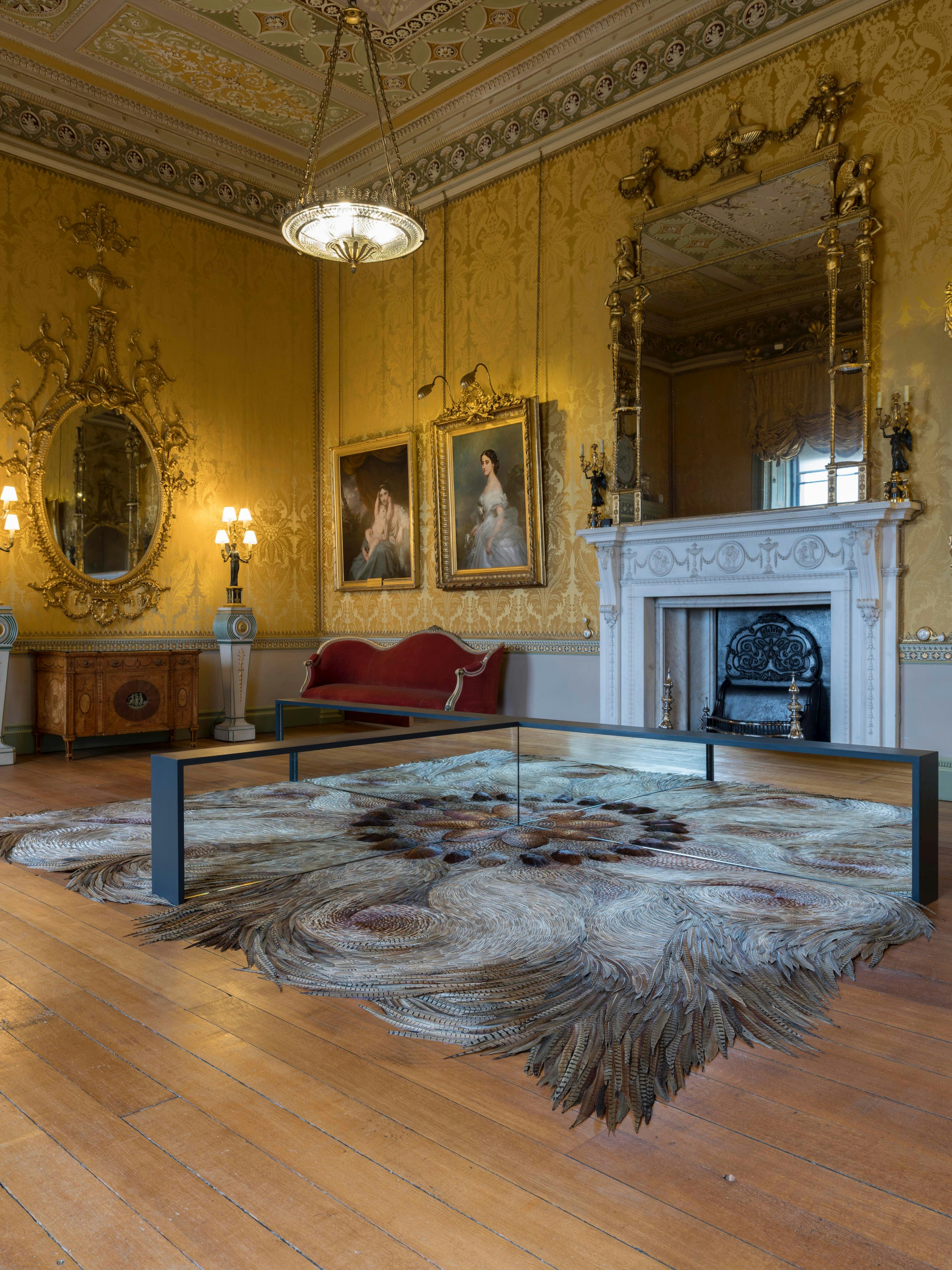
Vous avez aimé cet article ? Devenez mécène sur tipeee m’aide beaucoup.
Bonjour je suis Aldjia créatrice et animatrice de ce podcast. Je suis également l'autrice de ce blog, ravie de vous rencontrer !